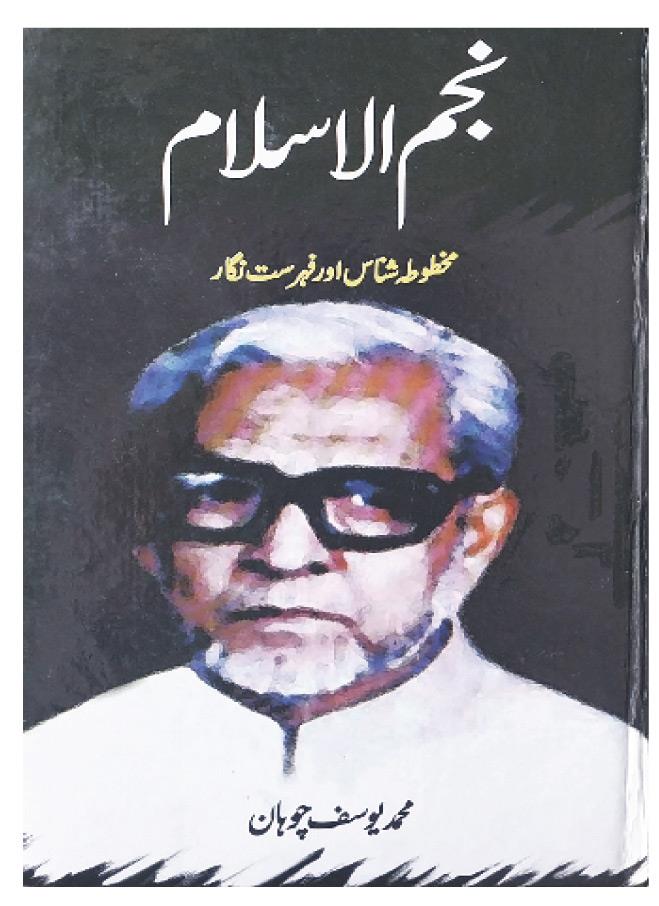Unified style guide for academic writing and Najmul Islam
By Rauf Parekh
2025-08-18
IN this age of technology when AI-generated research papers are being retracted in the West and our universities have been turned into paper mills where fal(e theses are approved to award genuine degrees, it seems out of place to talk about research methodologies or a standardised and unified manual of style for academic writing.
Butuntilthelate1980s,one oftheissues that scholars of Urdu had to face was that there was no unified manual of style or standardised style sheet, also known as style guide, which could instruct them in the methods of citations in a research paper or dissertation. To prove one`s intellectual honesty, it is considered of utmost importance to properly acknowledge the books, articles and other sources ofinformation cited in one`s research work. Such pieces of information may include names of authors and titles of publications referred to, along with their bibliographic details, for instance, publisher and year of publication and page number etc. in addition to other aspects, such as, formatting, font size, number of lines on each page, paragraphing, punctuation and useof formal language. The purpose is to present the research worl( in such a transparent manner that readers would be able to verify the information, if they so desire.
This also ensures consistency and uniformity. In the Western world, style guides, such as, Chicago Manual of Style, have been in place for over a century now, ensuring a standardised method.
Though literary research had come a long way and over a century had elapsed since academic research began in Urdu, the research methodology lacked consistency. In past, research publications and research scholars usually decided on their own about the methods to be used for formatting, referencing and bibliographic listing in their academic writings. It was Dr Najmul Islam who in 1987 launched Tehgeeg, an Urdu research journal from Sindh University`s Urdu department, which was to decide on some major aspects of Urdu`s research methodology and style of academic writing. Though even today we do not have any unified manual of style for Urdu`s academic writing, most of Urdu`s research journals follow Turabian Citation Style, which is a simplified version of The Chicago Style of Manual.
Nonetheless, during the last few dec-ades, some patterns have emerged and researchers are now generally aware ofresearch methodologies. Najmul Islam and his writings played a key role in creating that awareness. Aside from stressing the need for a unified and standardised style guide for researchers, Najmul Islam practically showed through his own research papers and the writings that he edited for and published in Tehgeeg how to record the citations in the main text of a paper, give details in the footnotes or endnotes and compile a bibliography of the works cited. In fact, Tehgeeq was the first that provided our universities with a prototype of an Urdu research journal. Keeping in view the example set by Najmul Islam, many of our universities launched or re-launched or revamped their Urdu research journals.
Najmul Islam has largely been ignored by our critics and researchers.
Fortunately, at Islamabad`s Allama Iqbal Open University, a PhD dissertation was penned on Najmul Islam under the supervision of Dr Abdul Aziz Sahir.
Written by Muhammad Yousuf Chohan, the dissertation has been published in book form by Fiction House. Titled Najmul Islam: Makhtoota Shanaas Aur Fehrist Nigar, the book comprehensively discusses what research is, what theresearch methodologies used in Urdu are and how Najmul Islam played a vital role in reviving an interest in the principles and techniques of research in Urdu.
With an in-depth study and examples, Chohan has been able to extract some theoretical principles and explain how Najmul Islam practically applied them in his research.
According to Chohan, Prof Dr Najmul Islam was a researcher, critic, translator, academic and bibliographer. Born in Bijnor, UP, India, on July 1, 1933, he had begun contributing to literary magazines while still a student. At 18, he took active part in editing of Mepaar, a literary journal published from Meerut. In 1956, he migrated to Pakistan and settled in Suklcur. He taught at different colleges in Sindh and finally joined Sindh University`s Urdu department in 1970. He had done his PhD in 1969 under the supervision of Dr Ghulam Mustafa Khan and is known for his work on the influence of religious movements on Urdu literature. The thesis may be ranked among a few good research works carried out at our universities in recent years.
Prof Najmul Islam died on Feb 13, 2001, in Hyderabad, Sindh.




